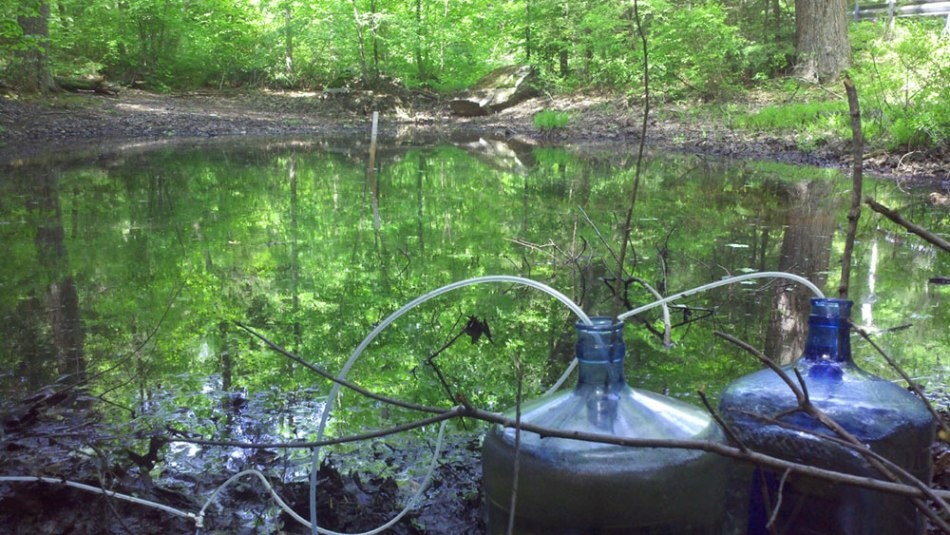May 9 2017
Lakes and ponds have a significant role to play in the global carbon cycle, and are regularly net emitters of carbon gases to the atmosphere. However, the rate at which gases travel across the air-water boundary is not properly measured, mainly for small ponds.
 One of the ponds studied by researchers. In the foreground are the jugs they used to disperse propane in the ponds during the experiments. (Courtesy of Meredith Holgerson)
One of the ponds studied by researchers. In the foreground are the jugs they used to disperse propane in the ponds during the experiments. (Courtesy of Meredith Holgerson)
In a new study led by Yale, the research team evaluated how the size of lakes and ponds affects gas exchange rates as that might have effects on carbon emissions and global climate change.
The research paper explains that the size of water bodies can impact the rate at which greenhouse gases, such as methane and carbon dioxide, travel from lakes and ponds into the atmosphere. The paper has been published in the Journal of Geophysical Research — Biogeosciences.
Although gas exchange in larger lakes can be estimated by wind speed, this relationship fails under low-wind conditions, such as in small ponds, said Meredith Holgerson 2016 Ph.D., a recent graduate of the Yale School of Forestry & Environmental Studies (F&ES) and the study’s lead author.
We found that we can’t easily predict gas exchange rates in small ponds, and that variability in gas exchange increases with lake size. This is important because gas exchange variability is not well accounted for in global models of greenhouse gas emissions from inland waters, but needs to be.
Meredith Holgerson Ph.D.
The researchers measured the rate of gas exchange between the atmosphere also known as gas transfer velocity and water bodies, at four small ponds in the Yale-Myers Forest in North-eastern Connecticut. They then compared gas exchange rates from 67 lakes and ponds worldwide, they discovered that both variability and gas exchange rate increased with the size of the lake.
Their results show that exchange rates differ among and within different sized ponds and were not well estimated from environmental variables such as rainfall, wind and temperature. Scientists say that measuring the gas exchange rates of lakes and ponds is important for improved estimation of greenhouse gas emissions from inland water bodies.
The research team also included Peter Raymond, professor of ecosystem ecology at F&ES, and Emily Farr 2014 B.S. 2017 M.E.M.